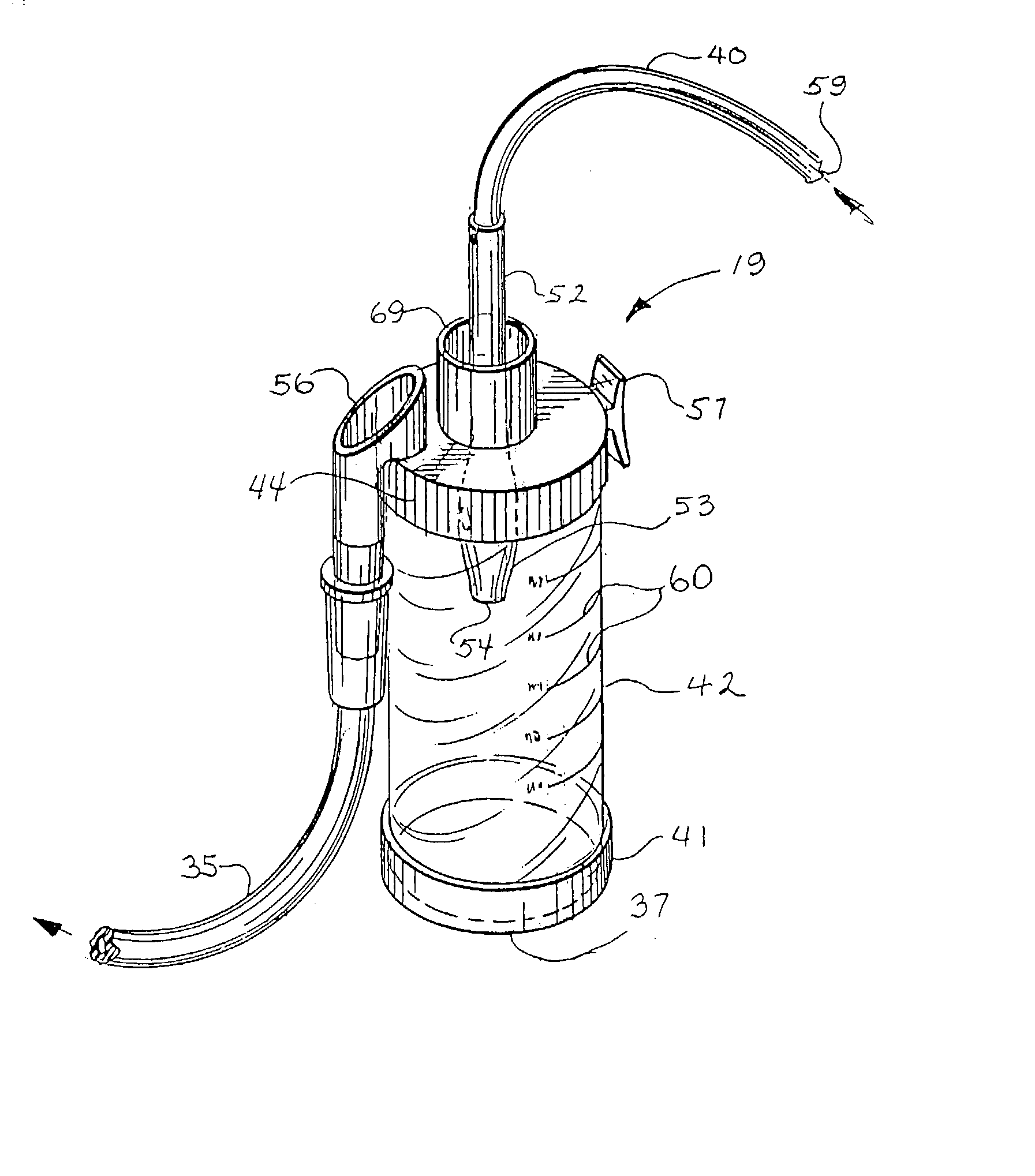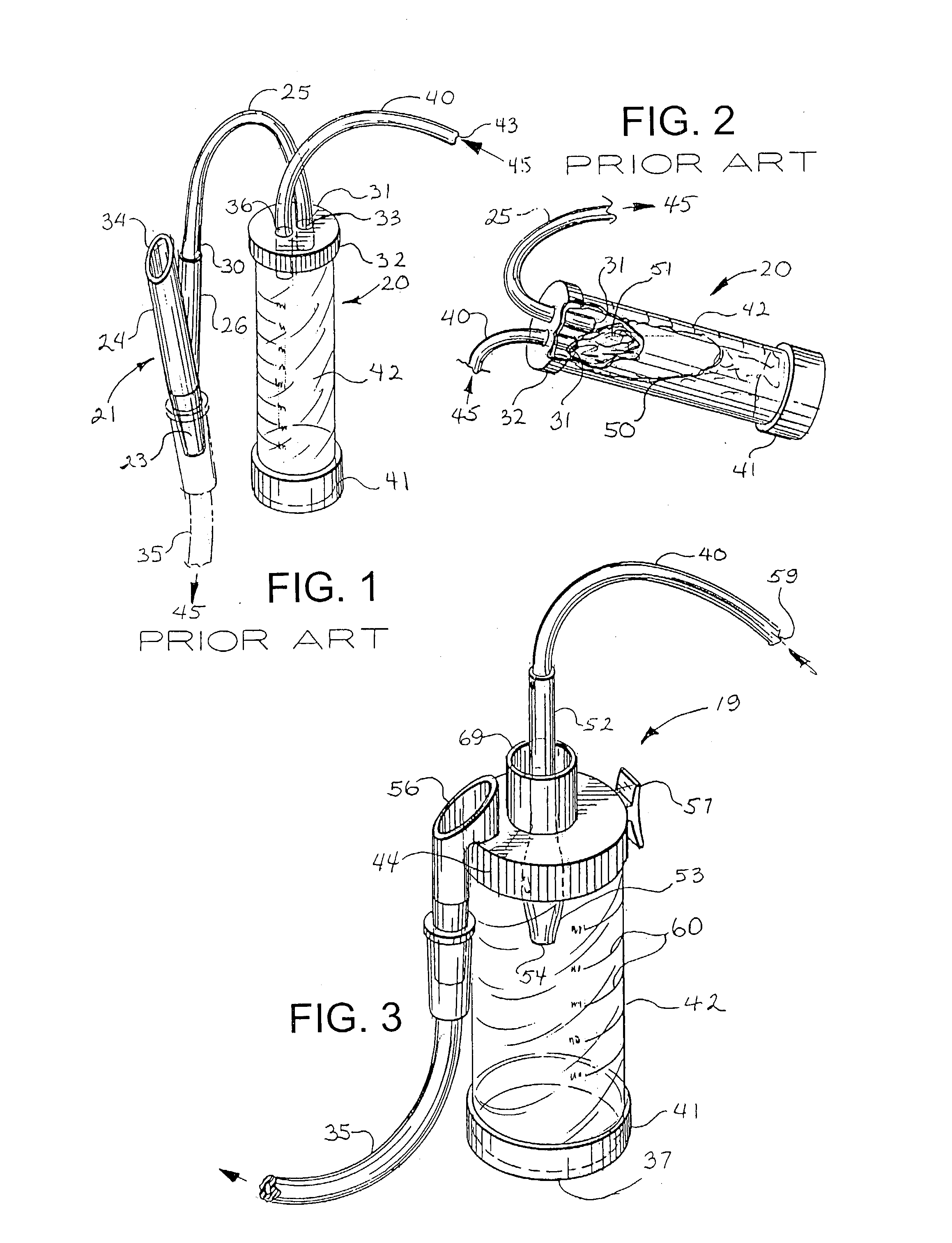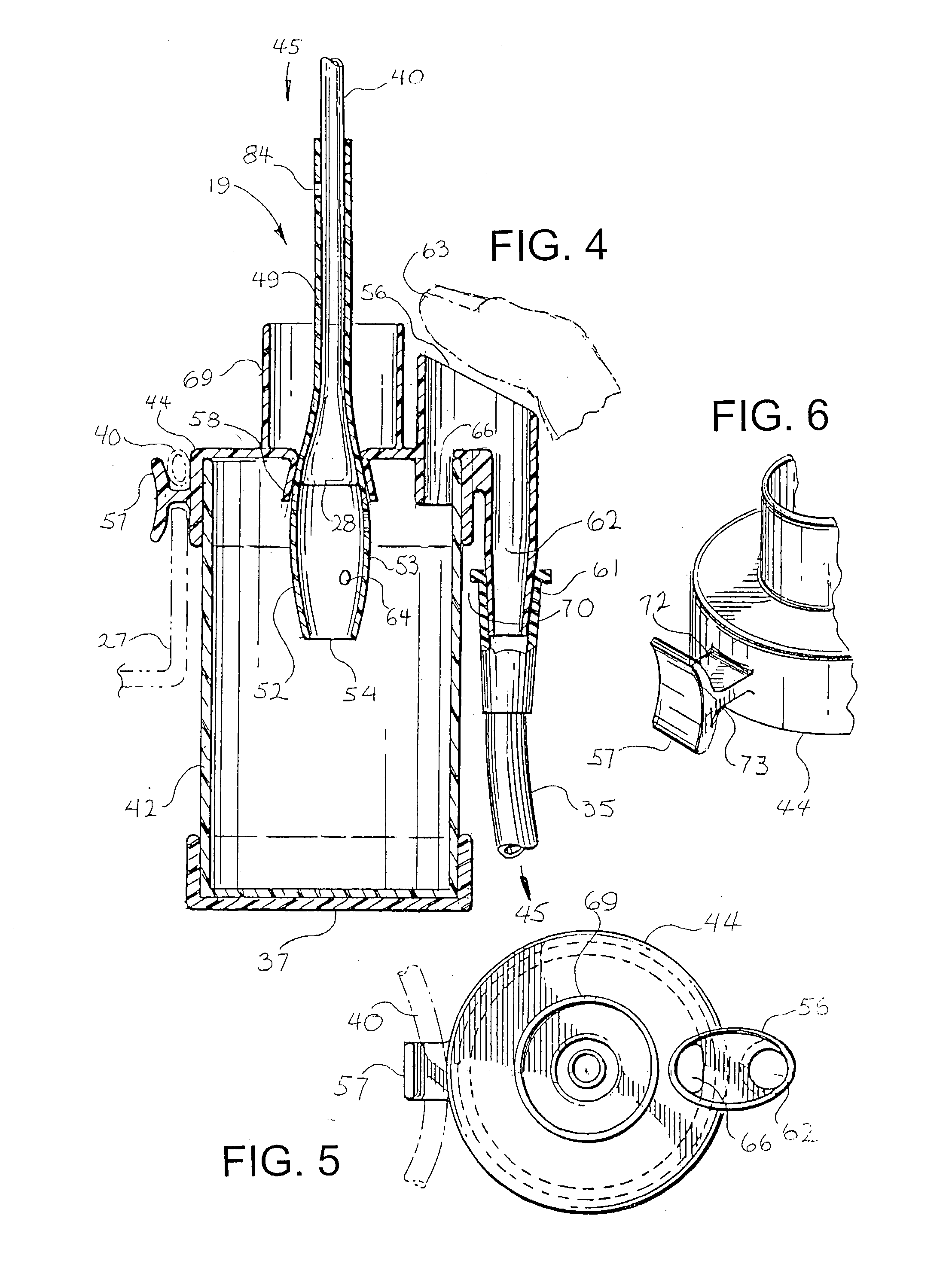Pneumatic medical system
a medical system and pneumatic technology, applied in the field of pneumatic medical system, can solve the problems of inconvenient use, inconvenient use, and inability to effectively suction some materials, and achieve the effects of convenient assembly, manipulation, control, use and transportation, and easy manual holding and control
- Summary
- Abstract
- Description
- Claims
- Application Information
AI Technical Summary
Benefits of technology
Problems solved by technology
Method used
Image
Examples
Embodiment Construction
[0040] FIG. 1 illustrates the prior art. Shown in FIG. 1 is a specimen trap, also called a DeLee trap or DeLee trap system 20. Illustrated in FIG. 1 is outlet catheter 35. Outlet catheter 35 is attached at its distal end to a well-known vacuum source, such as a wall-mounted adapter, well known in the art (not shown). Outlet catheter 35 is attached at its proximal end to the cylindrical hollow bottom end 23 of the Y-shaped thumb valve 21. At the opposite end from bottom end 23 of Y-shaped thumb valve 21 are two cylindrical hollow tubes, a valve tube 24 and a catheter tube 26. Valve tube 24 and catheter tube 26 fuse to form cylindrical hollow bottom end 23 (as shown). Outlet catheter 25 has a distal connection end 30 and a proximal canister cap end 31 (as shown). Connection end 30 of outlet catheter 25 is connected to catheter tube 26. Canister cap end 31 of outlet catheter 25 passes through canister cap 32 through hole 33. Valve tube 24 has a diagonal top end 34. Also attached to can...
PUM
 Login to View More
Login to View More Abstract
Description
Claims
Application Information
 Login to View More
Login to View More - R&D
- Intellectual Property
- Life Sciences
- Materials
- Tech Scout
- Unparalleled Data Quality
- Higher Quality Content
- 60% Fewer Hallucinations
Browse by: Latest US Patents, China's latest patents, Technical Efficacy Thesaurus, Application Domain, Technology Topic, Popular Technical Reports.
© 2025 PatSnap. All rights reserved.Legal|Privacy policy|Modern Slavery Act Transparency Statement|Sitemap|About US| Contact US: help@patsnap.com



